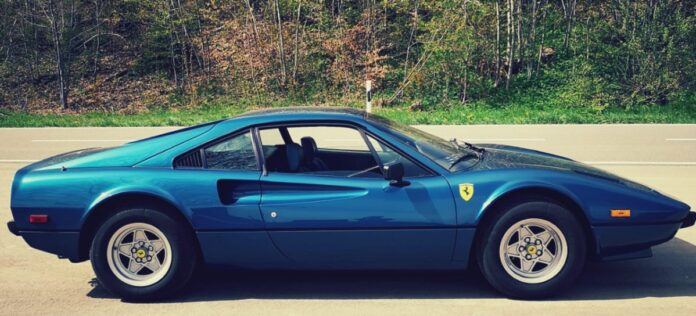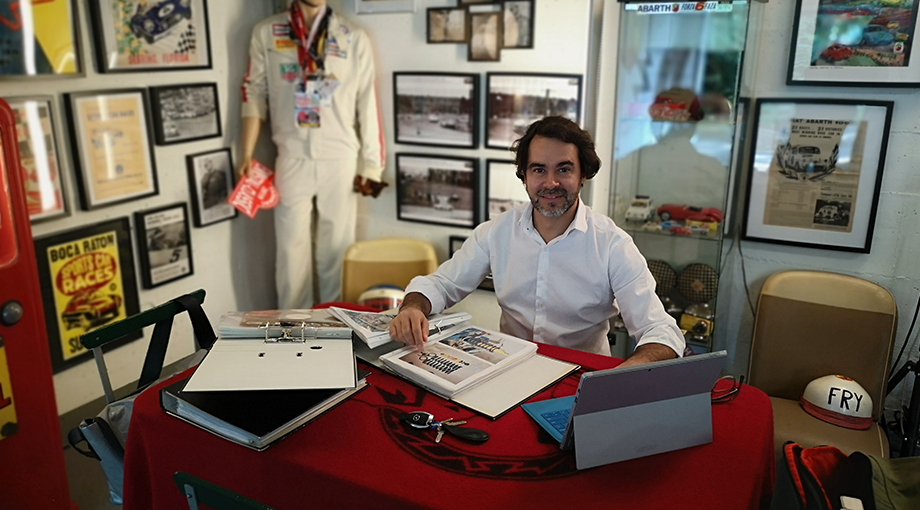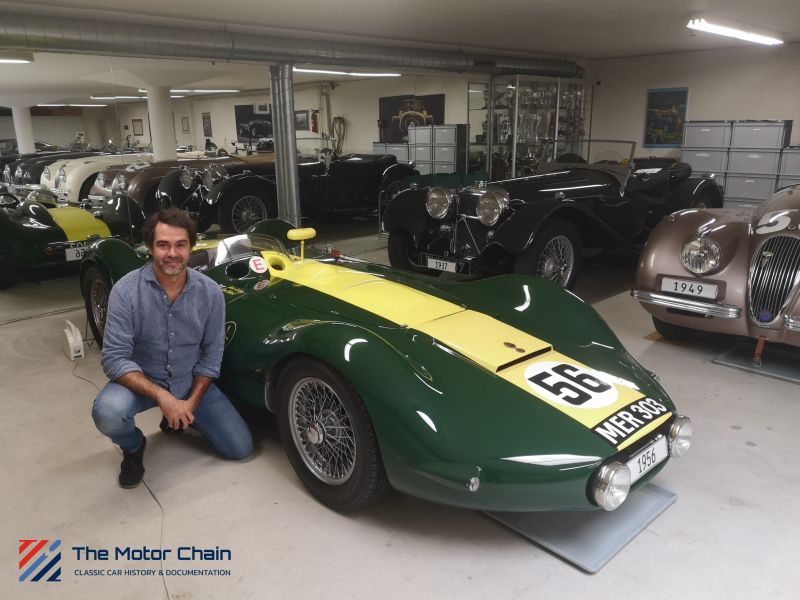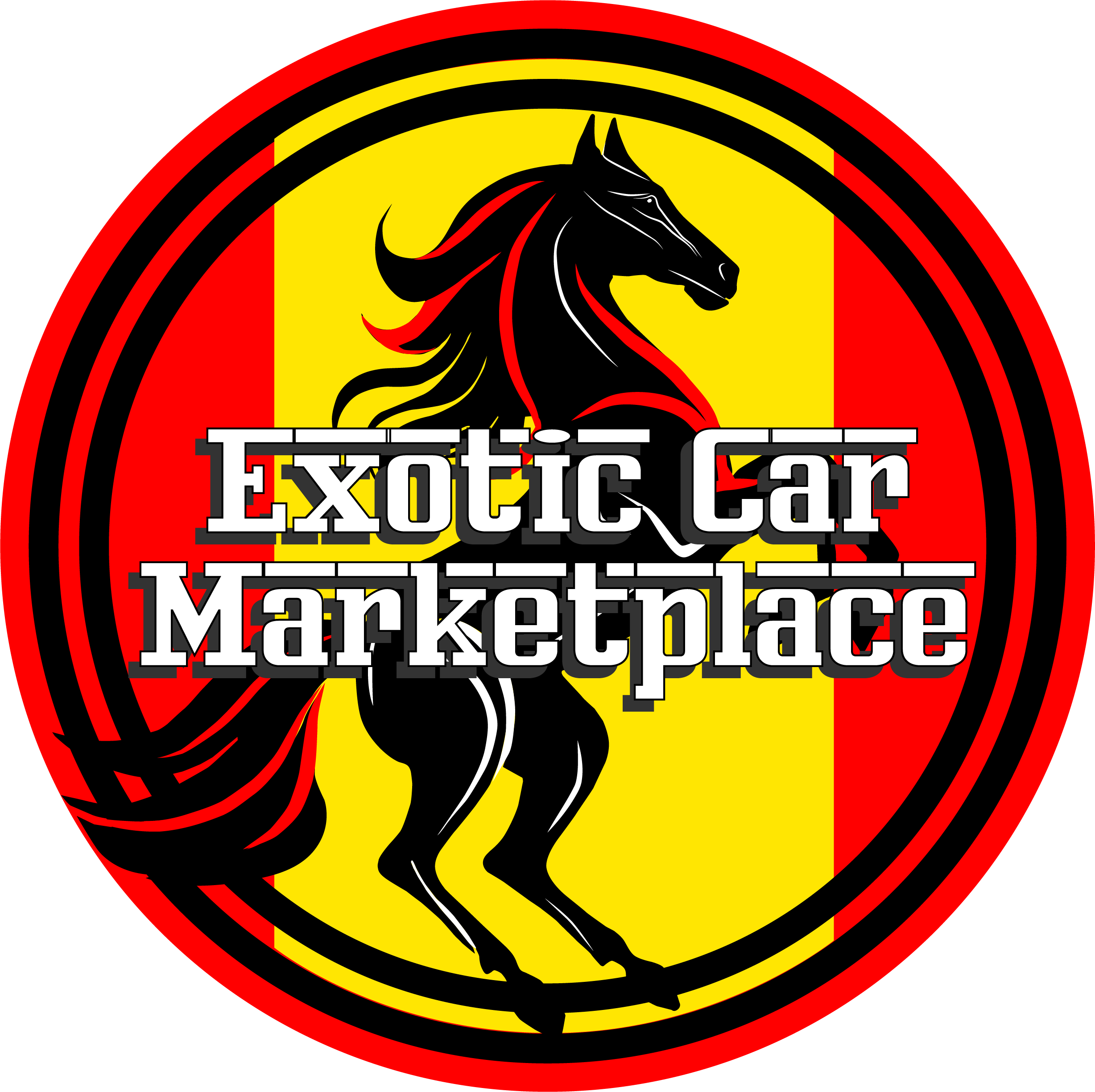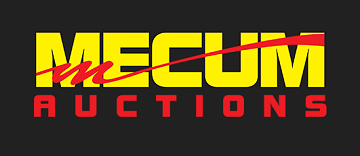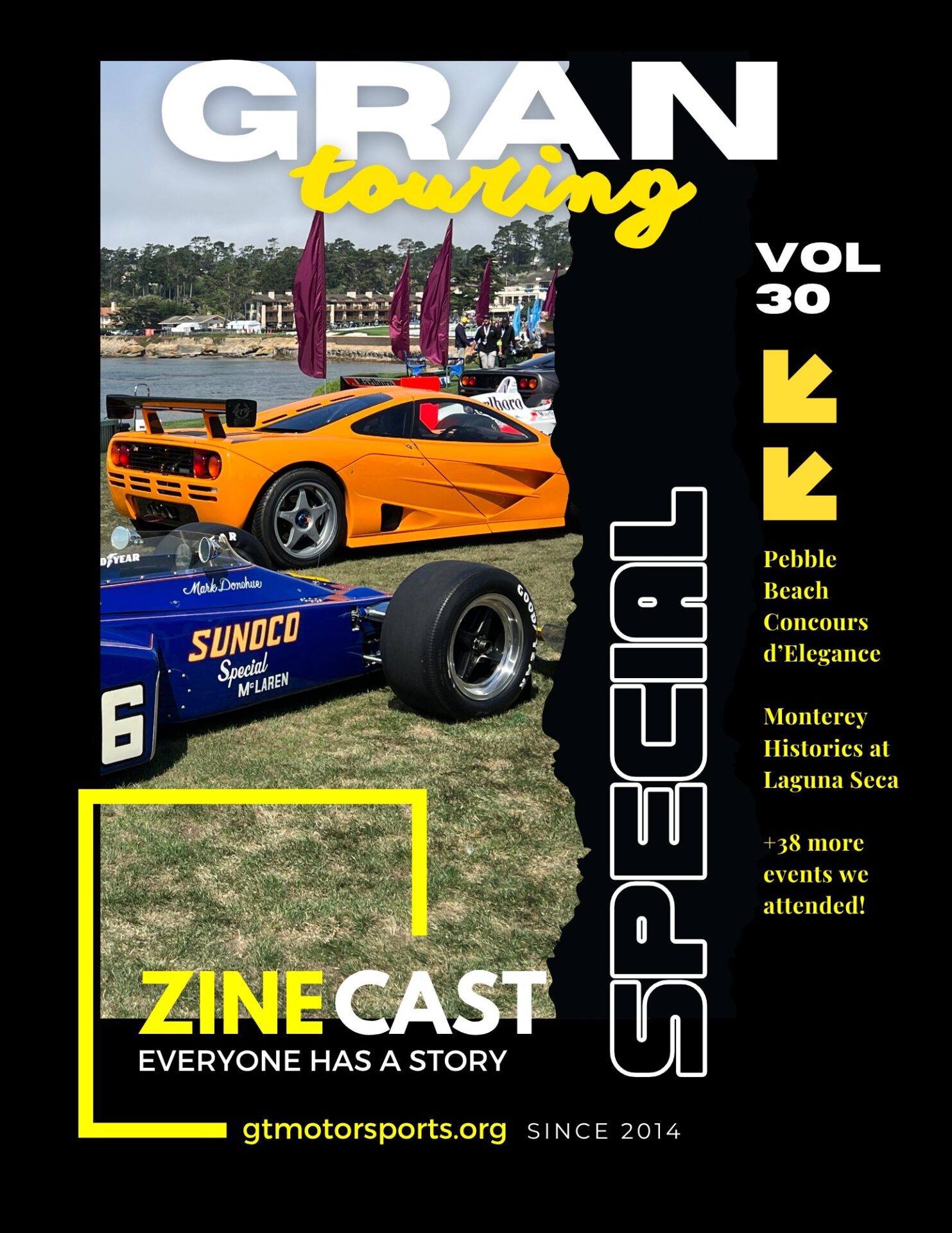What if… There was A better way to manage, preserve, share and transfer the history of your classic vehicle throughout its lifetime.
Steeped in the latest technology, The Motor Chain, founded by computer scientist and car enthusiast Julio Saiz aims to satisfy that very need. And he’s here to explain how it all works, and why securing and verifying the provenance of your collector vehicle is critical to its history.
Tune in everywhere you stream, download or listen!
 |  |  |
- Spotlight
- Notes
- Transcript
- Highlights
- Learn More
Spotlight
Julio Saiz - Founder & CEO for The Motor Chain
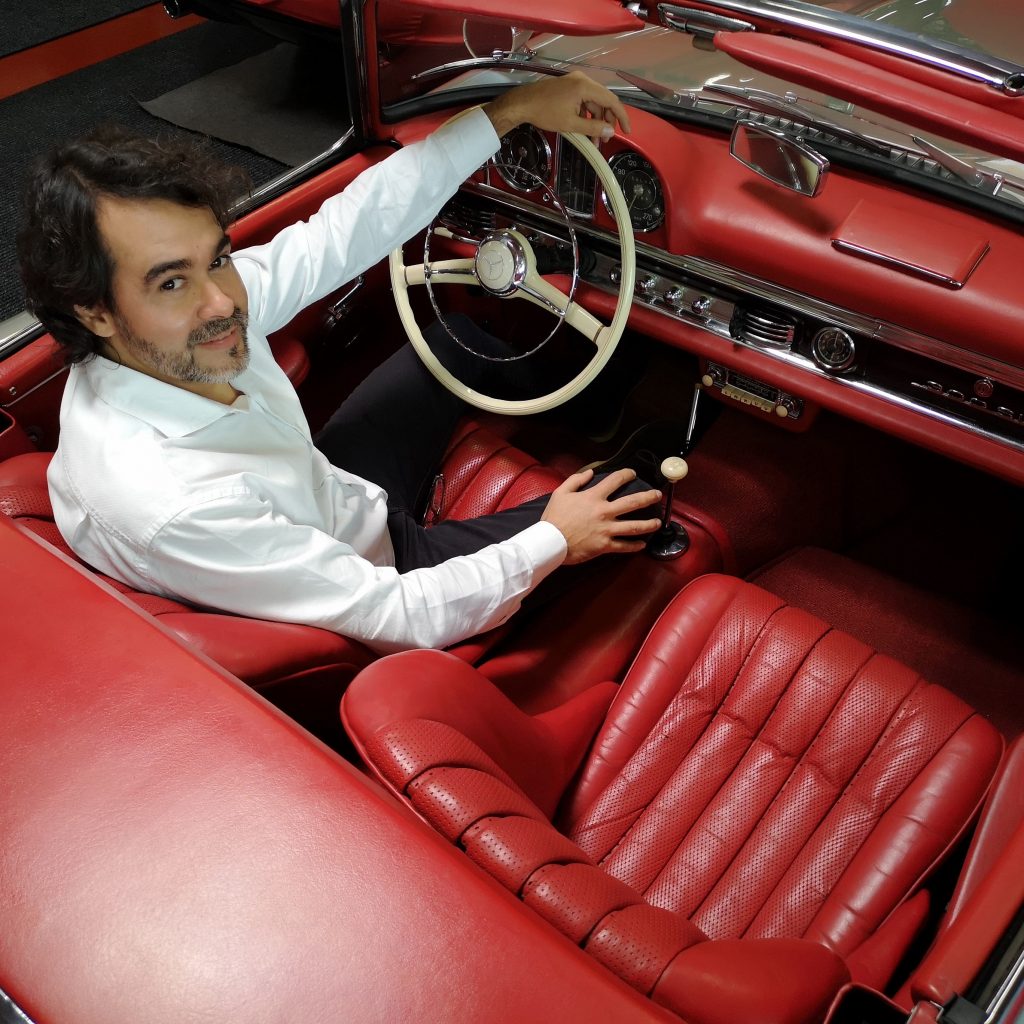
The Motor Chain lets you to authorize service providers and certifiers to add to your car’s history, share it with potential buyers and transfer the documentation and ownership when you sell the car. Good and certified documentation increases the value of your car up to 20%.
Contact: Julio Saiz at community@themotorchain.com | N/A | Visit Online!![]()
![]()
![]()
![]()
![]()
![]()
Notes
- The Car History Paradox “You own the car, but you don’t own its information”
- What is The Motor Chain? What was the motivation to start the app? What does it do? What are some of its features?
- Timelines & Blockchains – explain how this works?
- Cyber Security: Many people can be reluctant to use systems like this because, VIN are often viewed as PII (Personally Identifiable Information) – how are you handling sensitive data? GDPR compliance?
- If you sell the vehicle, can you transfer it to another owner/user on the Motor Chain
- Pricing model: Subscription, One-Time Fee, Versions (mobile vs website)
- What’s next for The Motor Chain?
and much, much more!
Transcript
Crew Chief Brad: [00:00:00] BreakFix podcast is all about capturing the living history of people from all over the autosphere, from wrench turners and racers to artists, authors, designers, and everything in between. Our goal is to inspire a new generation of petrolheads that wonder. How did they get that job or become that person?
The road to success is paved by all of us because everyone has a story.
What
Crew Chief Eric: if there was a better way to manage, preserve, share, and transfer the history of your classic vehicle through its lifetime? Steeped in the latest technology, the Motor Chain, founded by computer scientist and car enthusiast Julio Saiz, aims to satisfy that very need. And he’s here to explain how it all works and why securing and verifying the provenance of your collector vehicle is critical to its history.
Julio, welcome to BreakFix.
Julio Saiz: Hello, Eric. Thank you very much for having [00:01:00] me in the Break and Fix podcast.
Crew Chief Eric: Well, like all good BreakFix stories, there’s a superhero origin. So let’s talk about the who, what, when, and where of you and how all this came to be. What’s your petrolhead origin story?
Julio Saiz: I’ve been always fascinated about things that move fast.
Originally, I wanted to be a fighter pilot back in Spain, and I’m from Madrid. I didn’t make it. You have to study very hard. When you were 18 years old and, uh, finally didn’t make it to the air force in Spain, then I decided to do computer science engineering. I was right before the internet bubble. So it was very, uh, you know, fashion to join that profession, which I did.
And I’ve been in that industry for 20 years. Time to game. Okay. Salary. So I start to buy cars. I still own my very first car, which I bought in 2001. It’s an Alfa Romeo hatchback, 147. I don’t think that car was ever sold in the US, but I love it. My winter car, I just took it out on the summer [00:02:00] sleep. Because in 2010 or 11, I bought…
Honda is 2000, which is the car I was craving since I was, I don’t know, I mean, maybe 20 years age. And I’m the second owner of that car. Very proud of that. And it has now 70, 000 kilometers of joy. It’s a hundred percent OEM. I don’t plan to modify the car at all. And then in 2017, I wanted to buy a proper classic car.
And that was the starting of the motor chain, because I got my hands into 1977 Ferrari 308 GTB, with a new metallic saddle. And that was the origin of the motor chain idea. That was the ignition of that.
Crew Chief Eric: In the video on your website, where you talk about the founding of the motor chain, the 308 is behind you and you’re driving it around and you’re talking about it.
And you say very a matter of factly that when you were shopping for your first classic car, you really didn’t have something in mind. And I kind of chuckled because we’re all petrol heads of a certain age and the 308 is a bit the [00:03:00] icon. So I wanted to ask, was Magnum PI as big of a deal in Europe as it was in the United States in the 80s?
Julio Saiz: Yes, Magnum PI is very well known. It was never my favorite, to be honest. It’s not a TV show I like it a lot. I’m more full moon with Bruce Willis, you know, and this kind of TV show. That was my show in the 80s. So Miami Vice, for example, more than Magnum PI. The 308 came by luck, I will say. I had a budget and I was considering 993 or 960.
for Porsche. I wanted a very analogic car. I want to emulate Fangio feeling. And the reason I bought this car finally was because it’s early still. So it’s carburetor. There’s not injection. And I was not sure because the car is not red, but it is blue, blue, blue metal. It’s subtle. That’s the reason that nobody wanted, but I think I made the right choice in buying these.
Crew Chief Eric: So do you like driving it? What’s the experience like? It is like
Julio Saiz: working out. It’s like going to the gym. I think I lost a [00:04:00] kilo every time I drive it in summer, it sucks 20 liters of fuel per a hundred kilometers. And I think like really 10 go to the engine, five go to the air and then five go to me because you really smell fuel when you arrive home, I love it.
And honestly, it’s full experience, whole sensorial experience. I really, really, really enjoy the car big time.
Crew Chief Eric: So as you mentioned, the 308 is the jumping off point for the motor chain. So let’s talk a little bit more about what the motor chain is. The backstory here is that when you bought the 308, as you said, it leaks fuel, but it has that analog experience and there’s probably a little oil in there.
And you’re not really sure. What the history of the car is. And that’s the most important part. When you take ownership as a custodian of a classic car, you want as much information as possible because you don’t want to throw good money after bad. And you don’t want to start replacing parts that have already been recently replaced.
And without those records, it’s really hard to tell. So what was it about the 308 that made you go, [00:05:00] Hmm. I wish I knew more about this car.
Julio Saiz: In particular, I was lucky because the previous owner was a very good collector and he kept very good records of the work that he did. So the negotiation of the price was very transparent.
Thanks to the fact that we knew what had to be done to the car, what there was done to the car before. But it is true that going back a little bit to the car had a gap between 77 and 85. Okay. The first carbon copy invoice I have from the car is from 1985, which by the way, I found the owner back in the U S of that car.
He’s helping me to build the story back of that car. But the most important is when I bought the car, I took all the paperwork with me, and then I felt the responsibility of keeping track of it. We, as an owners of cars, we do have a responsibility of documenting the car. And this is something that not everyone feels.
That’s why also one part of the Motochain is educating the community [00:06:00] about the importance of documenting the car. This is fundamental.
Crew Chief Eric: And what’s funny about that is it parallels computer science as we have evolved in writing programming languages. What do we always tell developers? Document, document, document.
Julio Saiz: Best practice.
Crew Chief Eric: Exactly. As code changes hands, somebody else needs to pick up where you left off. And cars are very similar in that way. It’s ironic that you’re bringing these two worlds together. So let’s talk a little bit more about how the motor chain works and how you developed it.
Julio Saiz: At the beginning, it was a little bit like a paperless project.
Like, Oh, I don’t, I don’t like paper. Paper get lost, so let’s do something that you can accumulate all the paper in electronic format. But then I went a little bit further. I was familiar with blockchain technology, and then I’m also familiar with putting together business models using technology, and I further developed that and I put together the business model for the MotoChain.
So with the MotoChain, what you do is you put the car in the middle of an ecosystem. Which is the classic car ecosystem. You put an asset in the middle of the ecosystem. Obviously [00:07:00] that the first person who has to jump into the motor chain is the owner. The owner will have to register the car in the motor chain.
You create a digital twin of the car with the registration process, chassis number, et cetera. And then the owner has the possibility of taking all the paperwork. From the past and put it on the motor chain in a timeline format. The most important thing of the motor chain is that you, as an owner, you can open the car to third parties.
So you take the car to your shop, to your mechanic, and then the mechanic can participate. into your car’s history. So they can input all the maintenance, all the work, all the restoration. They can document the work with photos. They can upload the invoices with photos, with PDF. And this input of any third party will be electronically signed off in the motochain.
And because we use blockchain technology and a little bit of governance, which is the validation. Of the identity of every user in the motor chain, the input [00:08:00] in the car history done by third parties is irrefutable and nobody can dispute in the future that this person did the job in the car. So you kind of fake it.
That’s the fundamental, let’s say, functionality of the motor chain.
Crew Chief Eric: I really like some of these features. One of them that sticks out to me and Julio, if you don’t mind me adding a request for engineering here in RFE.
Julio Saiz: Go ahead.
Crew Chief Eric: The notebook part is fascinating. But I’d love to take it to the next level because there is the preservation part of classic car collecting, but there’s also that resto mod part where you have a car that, you know, you’re trying to do something different with, or you’re building a show car.
There’s a lot of custom builds in the United States. It would be fun to expand upon that notebook and not just be. A to do list, but a mod list and to be able to write notes. And this is how we board over the engine. And this is how we rewired the fuel pump. And you know, this is where the trick switches to start the car, because some of these custom builds, when they change hands, you start scratching your head going, well, what did they do?
Why is it like this? Why did they wire it like [00:09:00] that? It’d be nice to have those builders notes in there where you can go back and go, Oh, okay. That makes more sense. And now I can trace back the history of that custom part of the build itself.
Julio Saiz: Well, I have good news Eric, you can do that already.
Crew Chief Eric: Oh, that’s awesome.
Julio Saiz: Yeah. Because you put an event in the timeline, we have a huge inventory of things that you can put there. And when you are building a restomode, you should document that. Like you start in January, 2024. Okay. We’ll start with the engine and you can start documenting what you do with the engine. You take the engine out, you put the engine apart, and then I’m going to put it with these pistons, new bore, whatever.
You should document all of that in the timeline of the car. Absolutely. It’s available. You can do it and you should do it. Exactly the way you describe it should be part of the car history. No question.
Crew Chief Eric: Can you also add where you purchased the parts from in case you need to order another one?
Julio Saiz: You have to.
I mean, so how to document something. So my recommendation is [00:10:00] that at the moment that the car has a failure, for example, it broke, something broke, you start documenting straightforward that day. The mileage the car had, you make a photo of the odometer. You make a photo of whatever the mess is, all the oil leaking, whatever, you make a photo.
And then you buy the spare part. You have the invoice of the spare part. It has to be part of the documentation. Then you take it to the shop and the shop will put the things apart and discover new things. You make a photo of whatever you discover. And then you make a photo of the after, when everything is clean and nice.
You make a photo of that. And finally, the invoice. the date of the work and the mileage and that’s it. So don’t wait to document after the job is done because you will forget a lot of details. Start documenting when the thing happen. The Motochain you can work in draft mode so you can immediately lock something in the timeline and you can build up, you know, that event and then when everything is closed, it’s done, it’s fixed.
The rest of the mode is Phoenix, then you just close everything, you remove the draft [00:11:00] mode, and then you stamp it in the timeline, and that’s forever.
Crew Chief Eric: So the timeline part of this makes sense, right? You’re building a chronology of the vehicle. But for our listeners that may not be familiar with blockchain technology, can you boil it down and explain how that works, and how it relates to the timeline that you’re building?
Julio Saiz: I think we’re all familiar with the concept of database. So database, you accumulate information and you have it information somewhere. And then the information belongs to whoever owns the database. That’s not the case of the Motochain. It’s a distributed database. The timeline is just the format that we propose to represent the history of the car.
I think it’s very user friendly to have the timeline of your car history in a way to represent what happened to the car in the past. The features of the blockchain, so why we use it, as I mentioned. We make the history irrefutable, the inputs of third parties, but also you can modify any input in the car.
When you transfer the car to the next owner, the next owner cannot modify anything in the timeline. And that mitigates the [00:12:00] risk of someone telling lies about the car. So you can modify the past of the car. And the last thing we use blockchain is because the transfer of the asset. So we control the property of the car.
So when you sell the car, you can transfer. The car and all the documentation to the next owner. And this is controlled by blockchain technology, which is fundamentally the property transfer.
Crew Chief Eric: The timeline and blockchain technology that you’re using, as you said, the history of the car becomes locked, but you also proposed a use case, which is contradictory to that in the sense that you have a hole in your history for the 308 between 77 and 85.
So if you can’t change the history, how are you able to modify missing records or add pieces where there are gaps in the timeline?
Julio Saiz: No, you can. I mean, if I find something between 77 and 85, I can create an event and I’ll say, Oh, I found a new owner and I have the evidence, very important. I have a document telling me that some person owned this car or some shop maintained this car [00:13:00] in seventies.
And I can do that. What you cannot do is modify an input in the timeline that.
Crew Chief Eric: But you can put pieces in between if there’s say you found another receipt or something like that.
Julio Saiz: So this is great. That adds
Crew Chief Eric: a layer, not only of security of chronology, but also accountability, which is really important with a collector car.
Who has been touching it? Who’s been responsible with it? Maybe there’s some parts that are missing. You can go back to that mechanic or that person and say, Hey, is there a box of 308s? Stuff laying around that we forgot when the other gentleman or lady sold the car. Which also brings up an interesting point.
You talk about the transfer of ownership. Is it possible to sell a vehicle through the motor chain?
Julio Saiz: I didn’t want the motor chain to be a marketplace. Cause there are many, there are very good, there are good, there are bad. There are online auctions. There are traditional marketplace, but if you are selling your car and you want to have transparent and honest conversation with.
the final [00:14:00] buyer or the two or three final buyers, you would like the buyer or as a buyer, I would like to understand better what the history of the car is. And this is when the motor chain enters into the discussion. As an owner, you can open the car to the buyer and the buyer in remote, obviously, will have time to take a look to the car history from the sofa in his living room with a glass of wine understanding what happened to the car.
You cannot sell a car but it will participate into the buy and sell process. And then when you sell the car, you can transfer that to the next one.
Crew Chief Eric: And then there’s the concept of classic car auctions, ranging from your local auction to the Meecums and the Barrett Jacksons, all the way up through the Pebble Beach Concours and everything in between.
So in that instance, using your technology, have you created an API where you can open that up to, let’s say, a Mecham to go in and pull the provenance of the [00:15:00] vehicle? How does that work in an auction situation where there might be a couple hundred people trying to look at the back history of the vehicle before they purchase it?
Is there an option for that in the motor chain?
Julio Saiz: There is an option for that as soon as, uh, all an auction company house like to take the next step in their value proposition for the clients. We can easily build an API and connect with these platforms. Not a problem.
Crew Chief Eric: Are you working to partner with any auction houses now?
Julio Saiz: We are having discussion with several parties. Which I cannot disclose as you can imagine. Okay. I will be more than happy to do so soon. They are all in houses. There are different kinds of parties. We like to make them as a step in maturity and value proposition for the clients. Yes.
Crew Chief Eric: So over the years, there’s been other tools, proposed ideas.
Even rough application development that’s been put together in the similar vein of the motor chain, but they never reached maturity like you did. But I’ve heard from some people that there’s a reluctance to put data [00:16:00] in a system like this. Because oftentimes the chassis number or the VIN, the vehicle identification number partnered with this record information or these receipts, which could have partial credit card numbers, addresses, names, things like that.
Now we reach a realm of what we call PII or personally identifiable information. How is the motor chain handling PII sensitive data? And now with new regulatory compliances in play like GDPR and others, how do you deal with the destruction of data and the dissemination of information?
Julio Saiz: First of all, the motor chain is 100 percent private.
There is no website. Where you can browse for cars, the car and the information of the car belongs to the owner is only up to the owner to open the car to someone else. The sharing process starts with the owner and is in one direction only, and it’s always one one. So you always know who you are sharing the information with.
So there is no broadcasting of information. ever. Then as a data processor, which is our role here, we used [00:17:00] best practices in development and best practices in hosting to avoid or to mitigate as much as possible the always inherent risk of managing electronic information in the internet. But we do not share the information with third parties.
We do not have publicity in our platform. And of course we do not trade. With the collector’s information or the cost information, that’s not our business model. We are not a social media and we are not a marketplace. And therefore is the reason that the platform is a paid platform. It’s not for free.
Crew Chief Eric: When we dig a little deeper and we talk about the receipt process and having those added to the timeline. Not to expose exactly how it works under the hood, but let me throw a scenario out here. I take a receipt, maybe I use my mobile device or I’m on my desktop and I want to basically scan it into the system.
Is that being stored as an image? A PDF? Is it being converted by OCR? OCR being Optical Character Recognition. And the reason I ask that is [00:18:00] Is there an opportunity for an owner or a user to obfuscate personally identifiable information, like their name or their address or other billing information when the receipts are stored in the system?
Julio Saiz: What the system will do is it will store an image in case you are making a photo with your mobile phone, or in case you are using your, uh, drive to upload information or a PDF, if you choose to upload a PDF, which it happens in the case of invoices from the garage, there’s no OCR, we don’t use OCR. If the owner feels like they want to obfuscate the information, they can do that.
Crew Chief Eric: Obviously with GDPR, if I decide I sell the car and I don’t transfer the records to somebody else, or I want to purge the records from the system, they are completely deleted by rule and regulation.
Julio Saiz: Of course, if we receive the request to either list the information that we have of a certain user or delete, we will delete, of course.
Crew Chief Eric: In the process of developing this whole portfolio, there’s a validation aspect of it too. So now there’s another layer of personally identifiable information. [00:19:00] You’re adding in an identification like a driver’s license. Why?
Julio Saiz: We need that to secure the irrefutability of the information. I think we mentioned before the accountability.
When you ask someone to participate in your car’s documentation, you as an owner, as a car collector, you will show two persons with reputation. You will like your restorer or your very respected and reputed shop to document their work. And of course we want that person when documenting the car is putting his reputation at stake.
And you as a collector, you want that because it’s not only the collector saying my car is A, B, C, it’s good, it’s bad. It’s another party saying that this car is good or bad, or I have done this job. The trust on your car documentation increases with more people participating in your car history. The more people you have.
Participating in your car history, the higher the trust and the higher the value of [00:20:00] your car will be. Obviously, if we had allowed anyone to do so with any identity validation, it would have zero value when we’re doing the MotoChamp. So I want the MotoChamp to be a very serious platform. So therefore I ask the participants to validate their identity for accountability.
Crew Chief Eric: Does that also extend to the shops that are doing the work? Yes. Absolutely. There are some shops that maybe they were around for four decades and they’re not here anymore. So now you almost have to build a history and a credibility on what they were doing with respect to maybe the Ferrari community or the Porsche community and all the cars that they worked on.
Julio Saiz: If the garages appear, you have an invoice. From 50 years ago, we cannot ask this garage to validate their identity. I mean, in this case, the owner will upload the invoice and that’s it. But from this point on, there is no excuse to have the validation and the electronic certification of the new participants in your car history.
Crew Chief Eric: You mentioned earlier. A paid service. So let’s talk about the pricing model. Is it a [00:21:00] subscription? Is it a one time fee? The different versions of the motor chain? If it’s a tiered system, is it a per seat? And I mean that by per driver’s seat. Are you paying per car? Is it per owner? How does the pricing model work for the motor chain?
Julio Saiz: So it’s very simple. It’s a subscription and you will pay 50 Per car per year, and that will give you access to all the features of the motor chain with a limited documentation for the car and or the shops is free so they can add whatever they want for free is just the owner needs to have the car subscribed in the platform.
There is another service that we offer currently only in in Switzerland, which is professional documentation service because we discovered that there are owners. And we have clients with a lot of cars and they do not have time to take all the existing paperwork and put it on the motor chain. And we say, no worries, we do it for you.
And we do where the cars are. And then we register the [00:22:00] car, just his number, et cetera. And we take all the paperwork. We scan it professionally. And we indexed all that information into the motor chain. And from that point on is the responsibility of the owner or the owner’s shops restore us to keep documenting the car
Crew Chief Eric: Are you storing those physical files for them as well or they get returned to the owner?
Julio Saiz: We do not neither. I allow the owners to post me the documentation. We go where the documentation is Cause you know, the paperwork is very valuable, so I don’t want the paper to be flying around in any case. Is
Crew Chief Eric: it all mobile based or is there a web equivalent?
Julio Saiz: Both. The very first version was iOS, which is available in the Apple store.
And instead of doing Android version, we decided to do web sensitive version, which you can use it from your laptop. So it’s a web version, any device, mobile device with web brochure, we’ll be able to use it with the same functionalities that we have in the iOS.
Crew Chief Eric: You talked about transfer of [00:23:00] ownership, especially within the app owner to owner.
How does that work? I’ve been paying for my subscription for whatever car I have, and I sell it to somebody and I transfer all my records over. Suddenly they get a bill for 50 bucks for that new car, or is, does the subscription have to run out and then it’s co termed into the renewal process?
Julio Saiz: So when you transfer the car, your renewal as an owner will be automatically canceled.
So you will not get further invoices for that car. And the next owner, at the moment that he will receive the car and the car documentation with no cost. But at the moment that he or she wants to continue the documentation, then the subscription will pop up for him or her.
Crew Chief Eric: Is there a period of time That a car and its documentation can stay in limbo.
Say I sell you my car. I say, okay, this car is sold. It no longer belongs to me. It’s going to go to Julio and you don’t accept it for a while. Maybe you’re busy. You forgot about it. Is there a point where those records are deleted or they just permanently stay in limbo [00:24:00] until you accept final ownership of the documents?
Julio Saiz: So we’ll keep sending reminders. to the seller and we will communicate to the buyer that the request is done is between them to accept and or get the request but if the buyer has executed the request and the seller is not sending the card we will send in automatic reminders in the case this is not happening the buyer will contact us and we will contact the seller about what the problem is could be a technical issue normally or this is something that you don’t do every day So maybe they don’t know how to do it.
They get lost with the process, which is very simple. I mean, that should not be the case. And then normally the seller then send the car with no problem. It actually, it takes three clicks to transfer a car. It’s no more than that. It happened and maybe someone does not want to receive the car in the moto chain because doesn’t like it.
And then the seller will communicate that to us and we will store the car. We have a special account, which is the storage.
Crew Chief Eric: That’s especially important, too, when you’re thinking about [00:25:00] maybe a state planning, where you have a large collection and the owner or the curator passes away. What do you do with those records?
There’s a provenance there. Nobody wants to start this process over again. Purging the information is one thing, but it’s that lost in limbo situation where what do you do with that car? And I’m glad to see that you guys have taken the time and foresight to say, we need to hold this. We don’t want to recreate the wheel every time a car transfers around.
Thank you.
Julio Saiz: Exactly. Exactly. I mean, our mission is to preserve the car history and avoid gaps. So obviously, I mean, we do not believe that information unless the owner asks for it. We spoke about that GDPR wise, the car will remain in the storage. And hopefully crossing fingers that in the future, maybe another owner will call us and say, by the way, is there a chance that this car was in the motor shape and we’ll look for it.
Obviously the owner will have to show evidence of ownership. There is a governance. They’re not only technology and if we agree that effectively he or she is the new owner, then we will move the car to him or [00:26:00] her
Crew Chief Eric: expanding on that. There is a concept of community on the motor chain. How does that work?
Is it open? Is it by invite? What kind of information is shared in the community portion of the TMC?
Julio Saiz: It is not by invitation. So everyone who owns a car and believes that the car deserve documentation, which in my opinion, Any car deserves documentation is open to register to the car and start documenting the car the community right now We have growing a social media channel which communicate developments of the platform We are very strong in linkedin as well So you can follow me in linkedin which are sharing information of our progress and I have a regular newsletter Where we inform about changes in the platform upcoming events, etc
Crew Chief Eric: Like every good software package, you have a roadmap and a release cycle.
So what’s next for the motor chain plans to expand any new features, some spoilers you can give us.
Julio Saiz: Probably the first is sync a little bit, the iOS version with the web version in the [00:27:00] iOS version, we, uh, fulfill these with not only the documentation of the car, but you have alarms, you have maintenance alarms, you have also what we call.
Notebooks, which is a kind of electronic post its where you can list the to dos with the car. It’s not really documentation, but you know, it’s important to have the list of what you have to do with the car. So probably the next version will sync all these functionalities with the web version. The web version doesn’t have this.
It has only the documentation part, the history. A lot of users are asking me the possibility to print out In a PDF, a summary of the car, they still like to have a paper that could be probably next future. Something which is already available is the history preserve sticker. The owners, they do have the possibility of asking us for this sticker.
This is unique per car and it comes with different colors in blue, silver or gold according to how good your documentation is. And [00:28:00] then we will go through documentation and we will do a rating. Well, you know, we have the best documented car in the world. We will use the same methodology to rate the documentation of the car.
And we will listen to this very special high quality sticker that our owners, they have it in the windshield of the car. And you can show that not only the car is in good condition, but you also look after the documentation and maybe you are a gold, a history preserved gold ring by the motor ship.
Crew Chief Eric: So you’re speaking my language, Julio.
This is awesome. And you know what I can see? At least one
Julio Saiz: convinced. I have one believer.
Crew Chief Eric: Well, I can see it applying to even your passenger vehicles too, right? Because maybe they’re not as prestigious as a classic car, but they have their own provenance. And when you go to go sell your Alpha 147 to somebody else and they go, well, this is a great car.
It is what it is. It’s a hot hatch, but it’s nice to have that records that go with it. Right? So this is really awesome to be able to do this for pretty much any vehicle that exists out there.
Julio Saiz: If you love the car, it should be in the motor chain. That’s my motto.
Crew Chief Eric: With that, [00:29:00] we’ve reached the part of the episode where I like to ask our guests any shout outs, promotions, or anything else you’d like to share that we haven’t covered thus far.
Julio Saiz: Eric, thank you for having me. And I will be more than happy to offer 25 percent discount to all your listeners.
Crew Chief Eric: We will be adding that promo code to our show notes. So we’ll have lots of follow on information and other details about the motor shade that you can check out at gtmotorsports. org. The Motorchain connects collector car owners with professionals and buyers, allowing all parties to participate in the vehicle’s documentation and history interactions and transfers, and are controlled and regulated with blockchain technology, securing trust in the documentation, And the vehicle’s provenance with the motor chain, you’ll never have to wonder about the health and status of your vehicles.
To learn more, visit www.themotorchain.com or follow Julio and the team on social media, at the motor chain, on Facebook, Twitter, and LinkedIn. Or follow them on Instagram at the motor chain [00:30:00] TMC underscore, and be sure to check out their YouTube channel. With that Julio, I can’t thank you enough for coming on break, fix and sharing your story and introducing the collector car and even us motor sports guys to a new piece of technology, a new piece of kit that we need in our arsenal to be able to continue to love, cherish, and take care of our cars.
There’s been rumblings about the need for a product like the motor chain for a very long time. And I’m happy to see that someone like yourself has stepped up to make it a reality. So thank you for what you’re doing.
Julio Saiz: My pleasure, Eric. Thank you for having me. And this is my 5 cents for the car community.
And I hope you guys will use it and enjoy it as much as I did building it. And like you say, the roadmap is not finished. So please come to me with ideas and I promise I will put them in the roadmap for you guys.
Crew Chief Eric: We hope you enjoyed another awesome episode of BreakFix Podcast brought to you by Grand Tory Motorsports. [00:31:00] If you’d like to be a guest on the show or get involved, be sure to follow us on all social media platforms at GrandTouringMotorsports. And if you’d like to learn more about the content of this episode, be sure to check out the follow on article at GTMotorsports.
org. We remain a commercial free and no annual fees organization through our sponsors, but also through the generous support of our fans, families, and friends through Patreon. For as little as 2. 50 a month, you can get access to more behind the scenes action, additional Pit Stop minisodes, and other VIP goodies, as well as keeping our team of creators Fed on their strict diet of fig Newtons, gumby bears, and monster.
So consider signing up for Patreon today at www. patreon. com forward slash GT motorsports, and remember without you, none of this would be [00:32:00] possible.
Highlights
Skip ahead if you must… Here’s the highlights from this episode you might be most interested in and their corresponding time stamps.
- 00:00 Introduction to BreakFix Podcast
- 00:55 Meet Julio Saiz: The Man Behind The Motor Chain
- 01:12 Julio’s Petrolhead Journey
- 02:21 The Birth of The Motor Chain
- 04:27 Understanding The Motor Chain
- 11:04 Blockchain Technology in Classic Car Documentation
- 15:55 Privacy and Security in The Motor Chain
- 20:57 Subscription and Pricing Model
- 26:01 Future Plans and Community Engagement
- 28:59 Conclusion and Promotions
Learn More
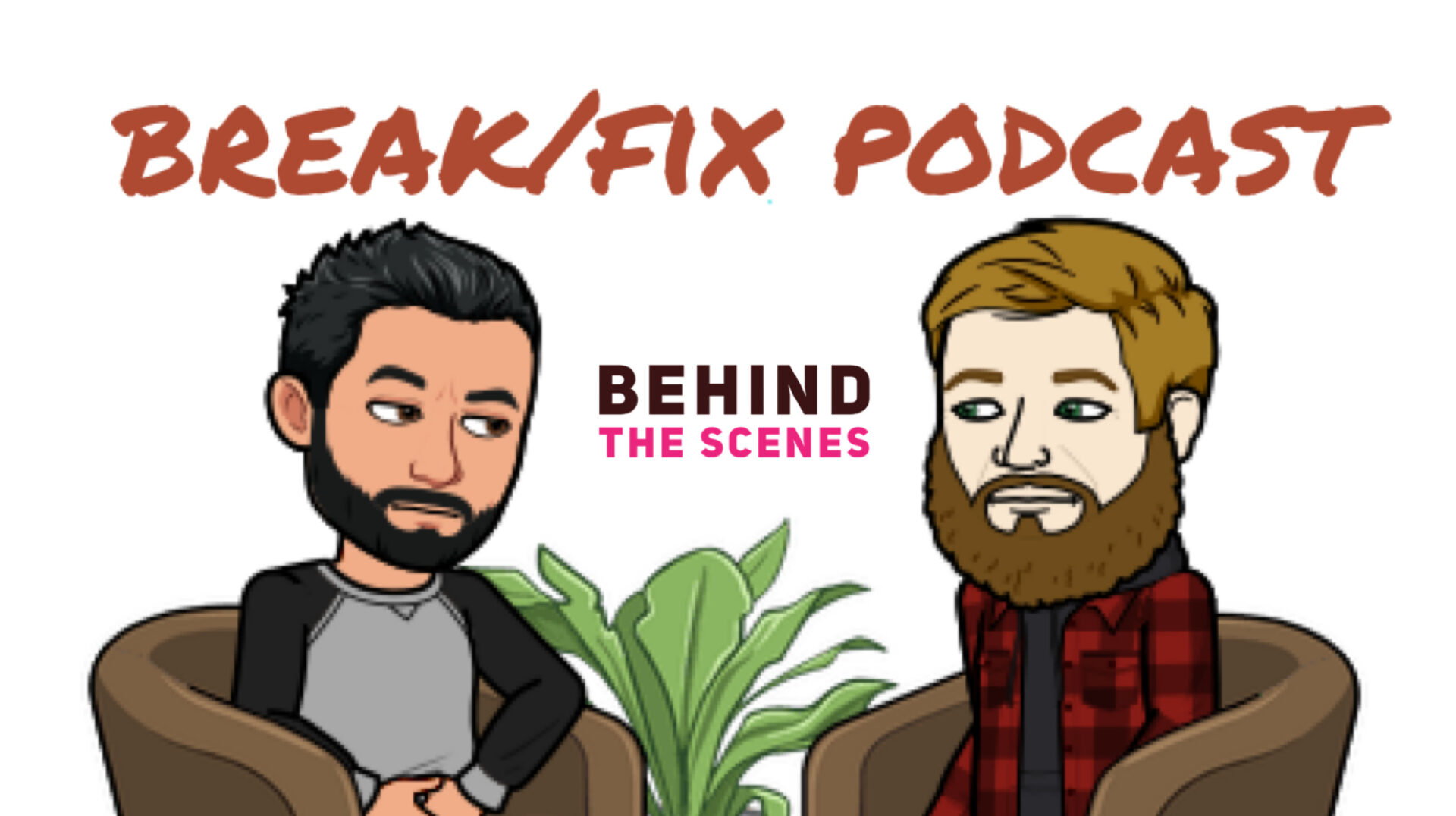
Consider becoming a GTM Patreon Supporter and get behind the scenes content and schwag!
Do you like what you've seen, heard and read? - Don't forget, GTM is fueled by volunteers and remains a no-annual-fee organization, but we still need help to pay to keep the lights on... For as little as $2.50/month you can help us keep the momentum going so we can continue to record, write, edit and broadcast your favorite content. Support GTM today! or make a One Time Donation.

If you enjoyed this episode, please go to Apple Podcasts and leave us a review. That would help us beat the algorithms and help spread the enthusiasm to others by way of Break/Fix and GTM. Subscribe to Break/Fix using your favorite Podcast App:
 |  |  |
There's more to this story!
Be sure to check out the behind the scenes for this episode, filled with extras, bloopers, and other great moments not found in the final version. Become a Break/Fix VIP today by joining our Patreon.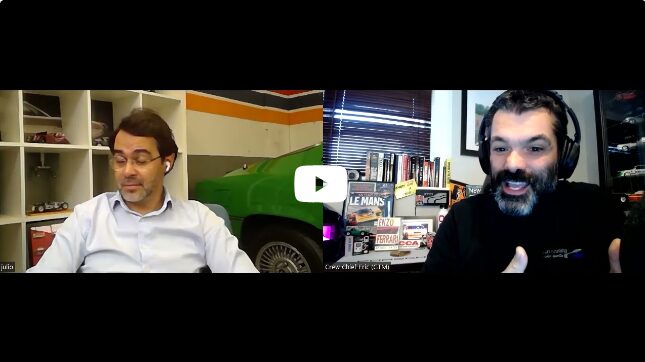
All of our BEHIND THE SCENES (BTS) Break/Fix episodes are raw and unedited, and expressly shared with the permission and consent of our guests.
To learn more logon to www.themotorchain.com or follow them on social media @themotorchain on Facebook, Twitter, and LinkedIn. @themotorchain_tmc_ on Instagram, and be sure to checkout their YT channel.
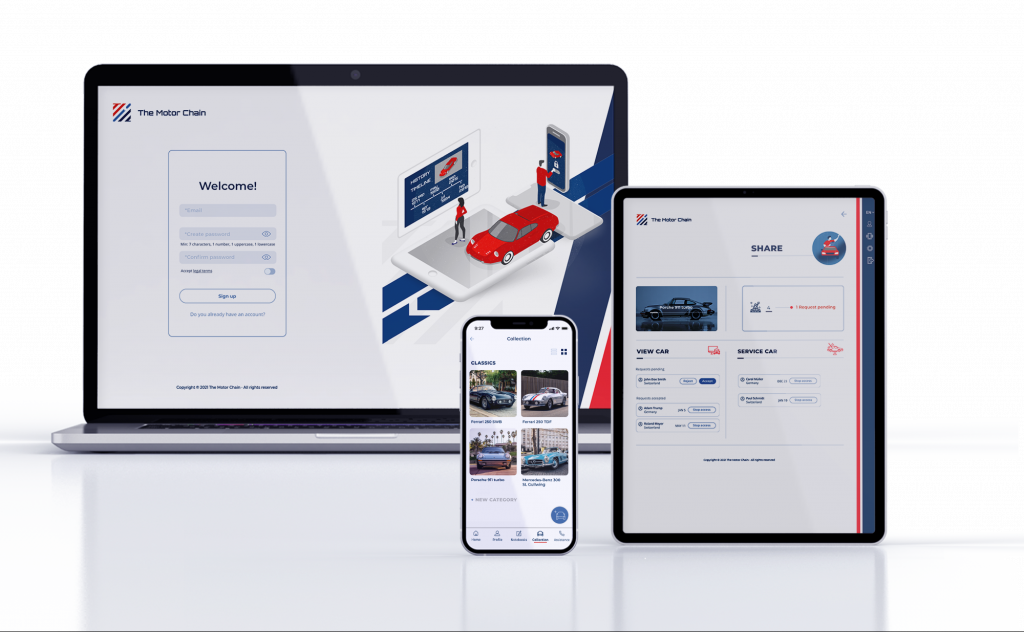
For the first 100 listeners to create a new account on The Motor Chain, use our promo code Break/FixTMC to receive 25% off your subscription. |
Start documenting your car now, don’t wait until the time of selling it.
The Motor Chain connects collector car owners with professionals and buyers, allowing all parties to participate in a vehicle’s documentation and history. Interactions and transfers are controlled and regulated with Blockchain technology securing trust in the documentation and the vehicle’s provenance. With The Motor Chain, you’ll never have to wonder about the health/status of your vehicles.


